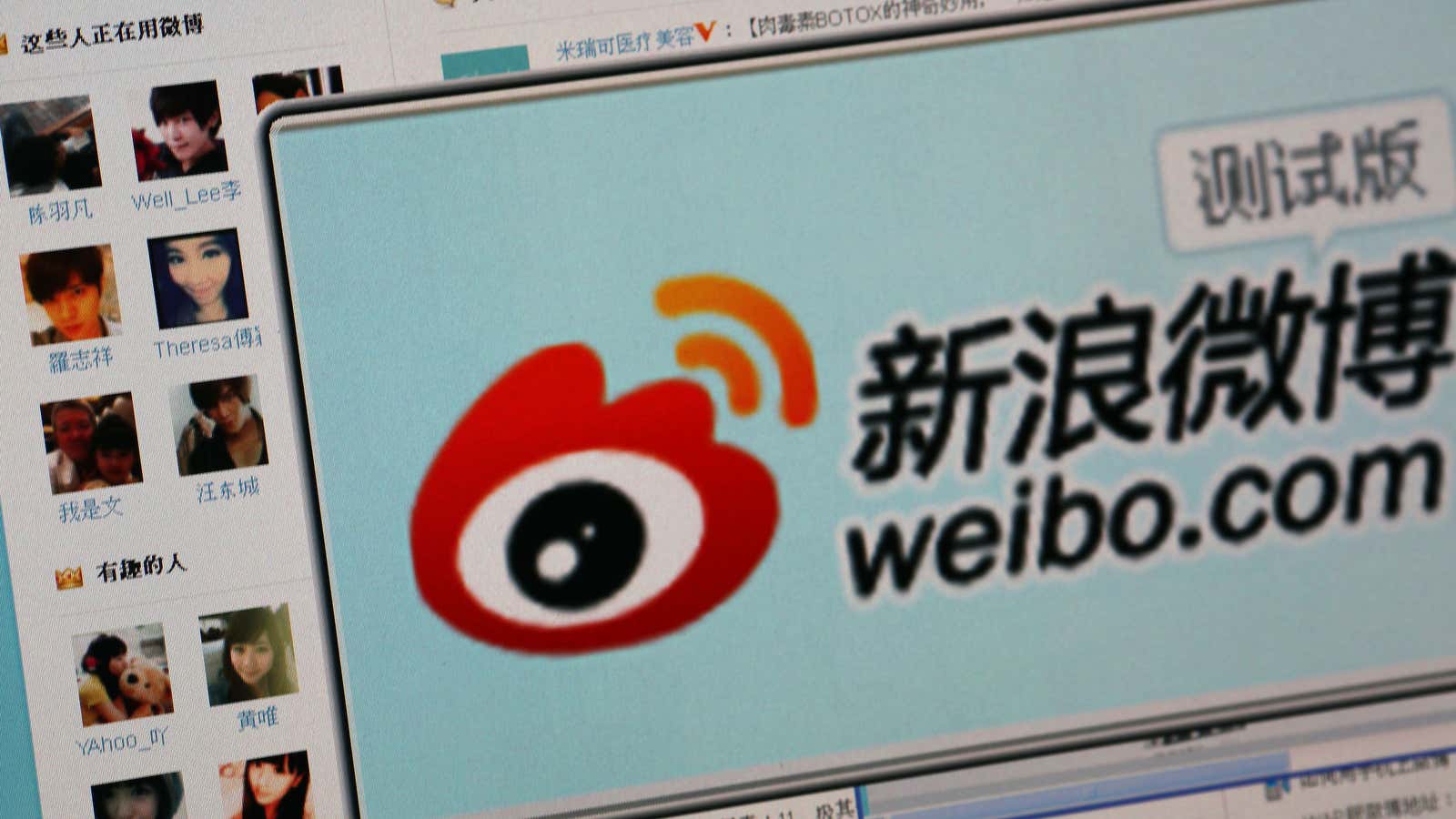China’s largest microblog platform, Sina Weibo, which is preparing to launch an initial public offering in the US, has rebranded. The company posted its decision to drop the first part of its name on its own microblog (registration in Chinese). “Goodbye Sina Weibo. Hello Weibo!” the company wrote on March 28.
By changing its name to “Weibo,” which translates to simply “Microblog,” the company may be hoping that investors will forget that other microblogs exist in China—including Tencent Weibo, Netease Weibo, Sohu Weibo, and at least a dozen others. For years, Sina Weibo has been known to many as just “Weibo”—a sign of its dominance.
The microblog formerly known as Sina Weibo may also be hoping to separate itself from some of its recent troubles, especially its loss of followers. Its user base fell 9% to 280.9 million users last year. That’s while other social media platforms such as WeChat (Tencent’s messaging app with a microblog feature) have increased users. About 37% of users who stopped using Sina Weibo last year began using WeChat, according to a government report.
Another struggle for Weibo is censorship and government regulation of the service, which may already be affecting how much Weibo’s monthly active users are worth—about $52 per user, based on company valuation estimates, compared to Twitter’s more than $126 per user, as we’ve reported. Tightening restrictions on information could mean lower website traffic or trouble monetizing some of Weibo’s services, such as game operations.
The bottom line is that adjusting the microblog’s name won’t change the fact that Weibo faces increasing competition in China—or that censorship looms large over Chinese social media.




